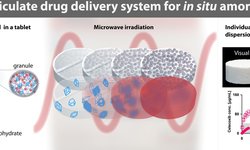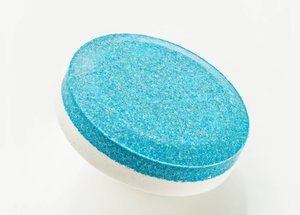Scientific papers
Despite their potential to enhance the oral bioavailability of poorly water-soluble drugs, spray-dried dispersions (SDDs) present formulation challenges due to their specific properties. This dissertation aimed to clarify the composition and process factors influencing favorable SDD performance and to formulate fast, medium, and slow-release formulations for an IVIVC (in vitro-in vivo correlation) study. Itraconazole (ITZ) served as a model poorly soluble drug, and hypromellose acetate succinate (HPMCAS) functioned as a carrier polymer for the SDDs.
Film casting proved to be a valuable screening method, demonstrating the feasibility of producing amorphous SDDs of ITZ and HPMCAS. It also facilitated the ranking of HPMCAS grades (i.e., HPMCAS-L > HPMCAS-M > HPMCAS-H) based on in-vitro dissolution performance. However, formulating solid oral dosage forms of ITZ-HPMCAS SDDs posed challenges due to their low particle size, poor flowability, and low bulk density.
Initial tableting experiments on a Natoli hand-operated press revealed that drug release from tablets containing SDDs of ITZ and HPMCAS-L was highly sensitive to small variations in compaction pressure and porosity. This sensitivity was not observed in SDDs of ITZ and HPMCAS-M. Utilizing a compaction simulator, reproducible fast, medium, and slow-release tablet formulations of ITZ and HPMCAS SDDs were developed by varying polymer grade (HPMCAS-L, HPMCAS-M), slugging pressure (20, 40 MPa), and compaction pressure (70, 85, 100 MPa).
The performance of SDDs was further assessed by comparing the compaction behavior of ITZ-HPMCAS SDDs and physical mixtures of ITZ and HPMCAS. Although the compressibility of both the SDDs and physical mixtures was similar, the SDDs had a greater tendency to laminate, especially at higher compression speeds. Tablets of SDDs containing ITZ and HPMCAS-L were particularly prone to lamination compared to those containing HPMCAS-M or HPMCAS-H. Interestingly, when the SDDs did not laminate, they exhibited greater tensile strength than tablets produced with the physical mixtures.
In conclusion, formulating SDDs of ITZ and HPMCAS presents significant challenges. The dissertation not only clarified composition and process factors affecting performance but also successfully developed fast, medium, and slow-release formulations for an IVIVC study.
Comments
No comments posted yet.
Add a comment














